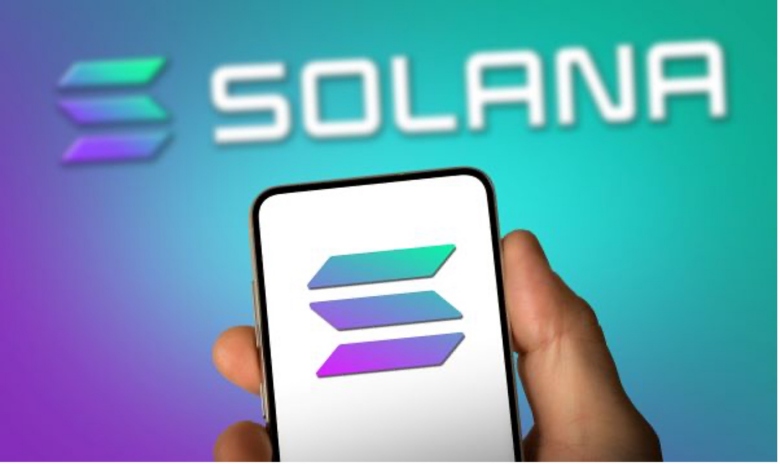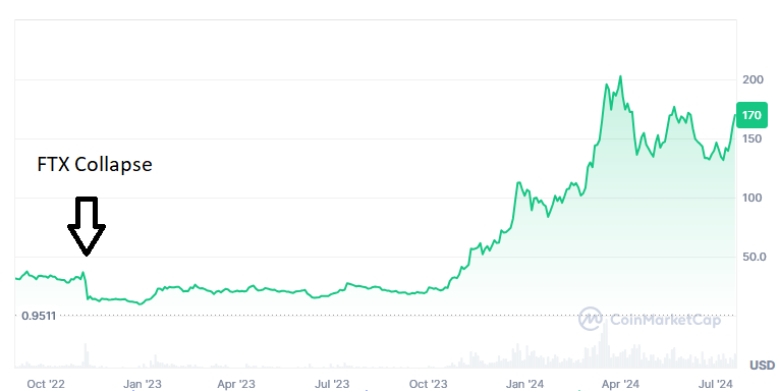Solana has descended into memecoin madness. And the SEC should step in.
The blockchain was once hailed for its high-speed, low-cost transactions: far faster and cheaper than its competitor Ethereum. But Solana has since become ground zero for a memecoin mania that is dangerous to investors, and to the network itself.
At Bitcoin Market Journal, we strongly discourage investing in memecoins, because they have no underlying value. They’re essentially a get-rich-quick scheme, though usually it’s the founders that get rich. (Read our guide here.)
The Securities and Exchange Commission – which is charged with protecting investors – has aggressively pursued legitimate crypto companies like Ripple and Binance, while largely ignoring the biggest threat to investor safety: memecoins.
I am calling on the SEC to crack down on memecoin projects, starting with the biggest offenders on Solana.
Solana: Ground Zero for Memecoins
Imagine if the New York Stock Exchange allowed anyone to start a shell company, market it to investors, then accept real money for their made-up company.
You can’t imagine this, because it’s slow and expensive to list on the NYSE. But it’s exactly what happens with memecoins.
Because Ethereum is slow and expensive, Solana has emerged as ground zero for memecoins. Solana’s minimal transaction costs — as low as $0.0001! — make it the go-to platform for memecoin promoters.
The biggest offender is a viral platform called PUMP.FUN, which lets anyone launch their own memecoin for just a couple of dollars. So scammers can create a new memecoin, hold most of the tokens for themselves, promote the token and drive up the price, then sell their tokens at a profit.
PUMP.FUN, as in “pump up the price, then have fun leaving others holding the bag.”
The number of memecoins launched on Solana through tools like PUMP.FUN is staggering: recently, over 100,000 new tokens were launching per day:

This massive explosion of memes has attracted over 1 million gamblers to Solana:

This memecoin frenzy has led to network congestion, raising serious questions about the long-term sustainability and credibility of Solana. It also highlights a glaring regulatory gap that the SEC should address.
SEC: Do Your Job
The SEC is charged with protecting investors.
Memecoins are perhaps the most speculative and risky “investments” in the financial world today. They have no real value. They rely on hype and social media promotion. They’re the fringiest of the fringe investments.
Compare memecoins with traditional markets. To get listed on NASDAQ, you go through extensive vetting. You have to meet strict financial and governance criteria. This process is supposed to be hard, so investors can trust in the credibility and transparency of NASDAQ-listed companies.
Or take the gambling industry, which is heavily regulated across the United States. Casinos are monitored by state gaming commissions, which enforce strict rules on everything from game fairness to gambling addiction prevention.
As a society, we’ve agreed that when money is at stake, and the potential for exploitation is high, we need regulation to protect consumers.
Memecoins, of course, operate in a regulatory grey area. They combine the high-risk nature of gambling with the veneer of legitimate investment, while lacking the oversight for either the financial industry or the gambling industry. This creates a perfect storm for potential investor harm.
I call on the SEC to do your job. If you want to crack down on crypto, start with the memecoins.

How to Regulate Memecoins
There are legitimate crypto companies building useful and valuable products on blockchain technology, and there are memecoins. To date, the SEC has focused on prosecuting the former, and largely ignoring the latter. That needs to change:
Define and classify memecoins: The SEC should establish clear criteria to distinguish memecoins from legitimate crypto companies, focusing on factors like usefulness, team credibility, and marketing tactics.
Implement listing requirements: The SEC should work with crypto exchanges to develop and enforce tough listing requirements for memecoins, similar to those used by traditional stock exchanges.
Mandatory disclosures: The SEC should encourage all crypto projects to provide comprehensive disclosures about their founders, token distribution, and potential risks. (Not just memecoins.)
Trading restrictions: The SEC should consider requiring Layer-1s like Solana to implement trading curbs or circuit breakers for memecoins to limit extreme price volatility.
Educational initiatives: The SEC should continue its campaigns to educate the public about the risks associated with memecoin investing.
By focusing its firepower on memecoins, the SEC can address one of the most harmful parts of crypto investing, without stifling innovation in legitimate companies.
Solana’s memecoin problem is a symptom of a larger issue in the crypto space: to bring in more institutional investors, we’ve got to get rid of the gamblers.
By taking action, the SEC can not only help prevent widespread financial harm. It can also bring some much-needed credibility to the crypto space.

How Solana Can Help
Remember, Solana is a community-driven company, meaning SOL token holders decide the direction. This means the Solana community has even more power than the SEC to cut away the cancer of memecoins from their blockchain. So these ideas are in their long-term interest:
Community-driven proposals: The Solana community should create and vote in proposals that discourage memecoins. For example:
- Implementing strict token creation requirements
- Introducing a vetting process for new tokens
- Establishing guidelines for responsible token launches
Collaboration with exchanges: The Solana Foundation should work with major exchanges to enforce stricter listing criteria for Solana-based tokens, especially those that appear to be memecoins.
Education initiatives: Solana should launch community-driven educational campaigns to inform users about the risks associated with memecoins and promote more sustainable investment practices.
Technical solutions: The Solana development team should discourage memecoin creation and trading, by adjusting transaction fees for certain types of token activities, or developing tools to flag crapcoins.
Self-regulatory body: Finally, Solana should establish a community-led regulatory body to oversee token launches, setting standards and best practices for the ecosystem.
The longer you let gambling drive your economy, the harder it is to shut down. Memecoins are a drug addiction, and Solana should go into rehab, before the SEC stages an intervention.
Solana’s Second Great Comeback?
Remember: Solana staged one of the great crypto comebacks.
When FTX collapsed in November 2022, many thought it was the end of Solana as well. FTX was a heavy investor in SOL (Solana-based tokens were often called “Sam coins”), and as FTX imploded, people sold their SOL, causing the price to plummet from $36 to less than $10.
The damage ran deeper. At the time, about 20% of Solana-based companies had received investments from FTX or Alameda, and many of these companies had their money trapped on FTX. So it wasn’t just SOL, it was a meteor strike impacting the entire Solana ecosystem. Many investors left Solana for dead.
But it was actually one of the great crypto investing opportunities of our time. Solana rebuilt itself, and the price of SOL – as of this writing – is $170.

But today investors should be worried about a far bigger threat to Solana: the proliferation of memecoins.
If Solana can regulate itself, then it could be a second great comeback story. If it doesn’t, I hope the SEC will do its job and step in.







